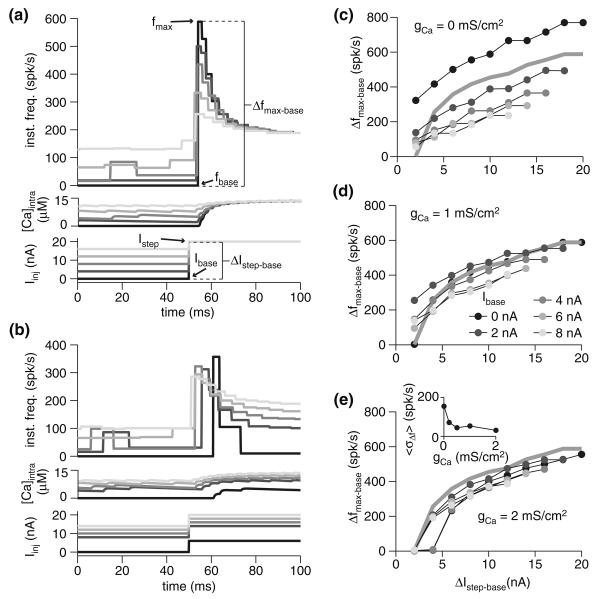Fig. 2.
Spike-frequency adaptation as a mechanism for dynamic range modulation. a Instantaneous frequency and calcium response of the model with gCa = 1 mS/cm2 for various baseline currents and steps to 20 nA. Injected current is depicted at bottom. b Instantaneous frequency and calcium response of the model with gCa = 1 mS/cm2 for various baseline currents and steps of 10 nA. c–e Maximal change in firing frequency (Δfmax−base) for various baseline currents (Ibase; gray scale, as indicated in panel d) and current step size (ΔIstep−base). Baseline frequency (fbase) was measured as the mean frequency over the last 100 ms of injection with baseline current. The three panels show the response of the model with varying degrees of spike-frequency adaptation: none (gCa = 0 mS/cm2; c), fit to the underlying physiology (gCa = 1 mS/cm2; d), and above the physiological-fit value (gCa = 2 mS/cm2; e). The gray line denotes the response with Ibase = 0 nA and gCa = 1 mS/cm2. The inset in panel e shows response variability as a function of gCa. For each ΔIstep−base, the standard deviation of the Δfmax−base responses across various Ibase values was obtained, and the mean of these (〈σΔf〉) is given for each gCa

